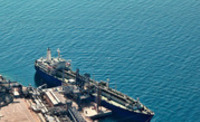ESTUDIO DE OPCIONES PARA SELECCIÓN DE EMBARCADERO PARA RECEPCIÓN DE GNL
- Ubicación: Acajutla, El Salvador
BACKGROUND
A Liquefied Natural Gas (LNG) Reception and Regasification facility and associated Gas-Fired Power Station is to be designed and constructed at Acajutla, El Salvador. Part of the project included the construction of a new jetty, safety systems, utilities and services for an LNG Floating Storage Unit (FSU) and LNG Carriers (LNGC). The FSU will be berthed at a Jetty, supplying LNG to the onshore buffer tank.
Four schemes were proposed by the client for the location and configuration of the Jetty. An Option Selection Study was required to be carried out to determine the preferred option. They were assessed against a range of technical criteria including; metocean data, marine design requirements, civil and structural design constraints and process support infrastructure requirements as well as overall project cost.
PROJECT OVERVIEW
Two jetty options were put forward for further consideration: a Double-Banked, Ship-to-Ship LNG transfer solution and a Cross-Jetty LNG transfer solution. For both configurations, transfer of LNG via Hard Arms or Hoses was considered; generating a total of four possible solutions.
A high level comparison of the Marine Civil and Structural design considerations for the four options were completed, in order to determine the technical solution to the Acajutla Jetty Design.
The selection of the optimum option was based on two main criteria:
- Cost (Capital and Operating)
- Berth Availability
KEY ASPECTS OF DELIVERY
A series of aspects were considered in order to analyse each option and select the most feasible to be implemented in the project. These are as follows:
- Jetty Marine Civil Engineering Assessment
- Jetty Support Infrastructure Assessment
- Berth Availability and Downtime Evaluation Assessment
- High level Cost estimate
- Further option determination process
CLEVER THINKING
The cost constraints were a major consideration to the client in achieving the economics of the project. The location and the metocean conditions required a more robust civil design further from the shore.
The initial report ranked the options and a further Clever Thinking process was used to challenge the design to look at ways to reduced the overall cost. This included reconsidering the use of an existing berth which reduced the cost of the jetty significantly but required the LNG pipeline route to be reconsidered.
BENEFITS TO CLIENT
- A more robust set of technical and cost options on which to assess the project economics
- A further option development giving potential cost savings
- A understanding of the uncertainty in the design and the next steps in the project development
